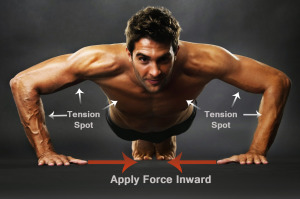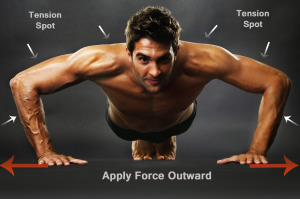Have you ever thought about the effectiveness of your workouts before? How many times have you done an exercise, working out a particular muscle to find that you are aching somewhere completely different? Are you really working out the muscle groups that you say you are?
You Need To Improve Your Mind-Muscle Connectivity
Mind-muscle connectivity could prove to be the answer! Mind-muscle connectivity is about activating as many muscle fibres in the target area as possible, as chances are you are not deploying the muscle fibres that you intend.
Let’s take an example: a standard press up; try 10 press-ups, then sit up and find the areas that feel pumped and worked. It’s very likely that you will feel a pump in your pecs, triceps but, also in your rear delts. Hang on a minute! We all thought press-ups work our chest, right?…wrong! The technique in which you have been doing press-ups may not be the most effective for chest development.
Your Muscles Have A Mind Of Their Own
The body tends to displace tension throughout the muscles in which cause the least effort or exertion. This means that the tension won’t necessary concentrate onto the muscles that you specifically intend to work – in this case, the pectorals – but what it finds easier to complete the action or the movement that you are performing. You must take back control! To get around this very common obstacle, you need to learn to focus your mind and concentrate the tension onto the target muscles.
Now you may not like this but, using your mind to focus and concentrate the tension onto a small proportion of muscles or a smaller area, will make the exercise a whole lot more challenging – not only in technique execution but, also in the aftermath – as you will likely experience severe muscle burn.
Depending on your technique, press-ups could be either a chest or a back exercise, however, it’s unconventional and suboptimal as a back exercise, to a great extent. Understanding the variation in technique will allow you to target the muscle more effectively, recruit more muscle fibres, and stop you from transferring the weight over a larger number of muscle groups.
Mind-Muscle Connectivity In Action
Now, let’s try and target the chest more effectively! First, hold your arms out straight in front of you; slightly beyond shoulders width, with hands pointed up – like you are about to do a press-up. Now imagine that there is an inflatable gym ball in the space between your hand or better yet use a real gym ball – you need to squeeze that ball hard. You should notice that your chest is tightening up and you are concentrating tension onto it.
Now try 10 press-ups but this time try using this technique, constantly squeeze inwards like you are trying to pop a ball throughout the entire pressing movement. The results should be quicky noticeable – more tension around the chest with very little around the back, and it probably just made doing press-ups a whole lot harder for you.
And now you may be thinking how a press up can work your back. This is done in a similar manner, however, instead of pushing inward like you are squeezing a ball, you need to apply tension in the opposite direction, just like you are trying to pull a Christmas cracker apart using both hands.
Now try 10 more press-ups using this technique to target your back. Apply this outward force constantly throughout the entire range of motion and for the entirety of the set. You will notice the tension shift away from your chest and towards your triceps, rear delts, and lats. You can use this principle when you are doing certain pulling exercises, to engage the back more.
Mind-muscle connectivity can and should be applied to every exercise you do. Before you start an exercise spend some time using light weights to discover how to best concentrate the tension onto your chosen muscle group. You may even find out that using lighter weights allows you to concentrate tension a lot more than the heavier weight you had been using.
The benefits to understanding this will soon show as you will begin to perfect your technique, reduce the risk of injury by fully controlling the weight lifted, and develop faster growth in the target areas.
Try this out for yourself, guys!




Interesting article, may have to try this out for myself.